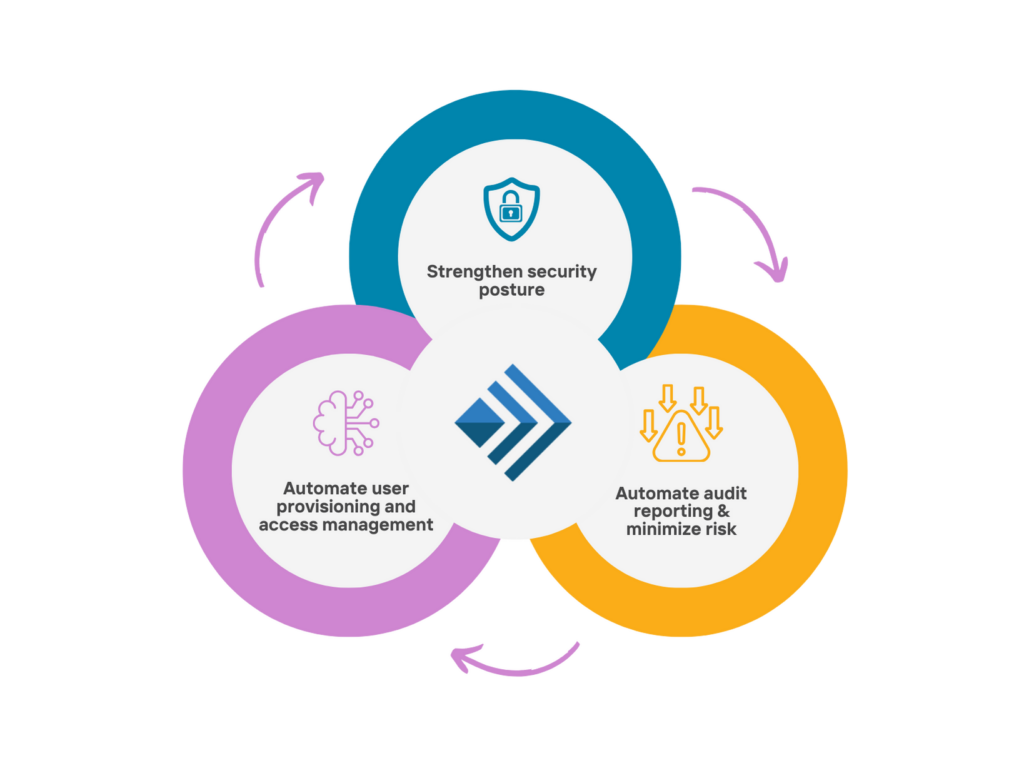
Statistically, you’ve not yet implemented a managed IAM provider in your organization. Maybe you’re in the process of choosing your IAM service provider, a crucial step in your cloud identity strategy, and embracing the zero trust model. Good on you for starting your digital transformation journey. But if you have not put sufficient thought into your identity management strategy? You’re setting yourself up for very avoidable difficulty in future seasons of your business.
As your enterprise grows and competes in the modern digital marketplace, your success accrues more identities to manage. Be they employees or customers, these identities grow exponentially as you become a bigger industry name. The most successful enterprises stay successful because they’ve identified identity trends and the challenges therein, including user access control and the role of a robust IAM system in managing access rights securely. By learning the symptoms of your identity needs, you’ll know the right moment to start charting out the IAM solution and services.
Sooner or Later, You Need a Managed IAM Provider
Believe it or not, there are times to hold off on acquiring a managed IAM provider. Of course, you should be proactive in charting out future identity plans. But while all modern industries need identity solutions at some stage, some should prioritize them sooner than others. Niranjan Ranganathan, Senior Manager at Simeio, advises that “finance and healthcare are at the top of the list for reasons of regulation and security, including the need for multi factor authentication and adaptive authentication. Retail and industrial can wait a little longer.”
Suppose you don’t have an identity expert or CISO on staff. In that case, you need to be aware of identity trends, including the use of IAM roles and the potential for integrating an IAM tool into your operations. If you cannot budget out identity investments, it still pays to get informed about them ahead of time. These early stages are a perfect time for an IAM assessment, which not only charts out your current needs but anticipates future developments including the adoption of an IAM platform or exploring identity as a service (IDaaS) solutions.
Managed IAM providers grant CISOs profound peace of mind in matters of security, including access privilege and passwordless authentication, but more tangible benefits extend to your whole identity fabric. On and off-boarding of clients and employees becomes simplified through automation. Identity-related support tickets and workhours plummet with good identity solutions. PAM becomes much more secure and better at catching active security incidents. Users also have a much better experience with greatly reduced instances of support tickets and improved experiences when tickets are filed.
When to get a Managed IAM Provider
When your company reaches a size that requires a dedicated team to on and off-board employees, manage user access, and administrate IAM roles. That is the precise moment where a managed IAM provider turns from a want to a need. If you do daily tasks related to digital identity or manage more than 2000 identities, you get significant ROI by investing in an IAM solution.
Automated onboarding, migration, and curation of identities using a cloud identity system makes the vast volume of tasks much more manageable for your growing enterprise. Managed IAM services can be invaluable even if your enterprise does not yet manage that volume of identities. Getting an IAM assessment from a managed IAM provider gives key insight into the best direction for your IAM strategy, considering factors like IAM policy and user identity management.
Securing access can also depend on regulatory or compliance needs. Numbers become irrelevant in matters of security; the size of your attack surface must determine your actions. Any breach is unacceptable, and prevention demands defensive measures ahead of time. Internally building a secure IAM system can cost millions. An end-to-end identity service handles both security and access control efficiency. Ranganathan estimates that the average managed IAM provider costs from 150k to a mil for three years of implementation of support. This costs much less than an internal solution, and substantially less than the consequences of a breach.
When bringing in a managed IAM provider, their solutions depend on several factors. Expect your pre-existing identity infrastructure to be thoroughly assessed and sweeping changes recommended. If you employ a CISO, have them ready to work closely with the IAM tool provider. For especially large enterprises, volume discounts can cut down on provider costs. Your projected ROIs should be your primary guide. Randall Fields, Vice President, Simeio, advises that “IAM is a force multiplier. The sooner in your lifecycle you implement it, the more problems you prevent from ever coming up.”
The Cost of Waiting Too Long
Just as getting a managed IAM provider as early as possible maximizes its benefits, delaying your investment exacerbates potential disasters. Fields reports that “a near miss makes you more appreciative than avoiding a breach entirely. Unfortunately, most companies don’t practice preventative identity spending even if it saves them in the long run. Implementing a program ahead of time can be cost avoidance on insurance premiums.” Even with insurance premiums aside, nothing hurts a company like a successful data breach. You must ask whether you want to invest in an effective solution now or wait for the calumny of a breach costing money, standing, and customer goodwill.
Defending against the ingenious methods of modern bad actors requires hefty safeguards. Retaining tech talent is becoming difficult. Having a managed IAM provider full of dedicated experts provides a ready-made team to monitor and adapt your platform over the course of years. As previously stated, internally implementing a lasting solution will prove very difficult. By contracting out, your CISO can plan and implement the necessary solutions much sooner in your company lifecycle. Otherwise, you’ll make IAM mistakes that will have you reaching out to a managed IAM provider anyway.
Be proactive in your identity strategy. Start small, contracting out to a managed IAM provider to build out your platform. Judge its success and scale up as needed. Choose a singular provider rather than multiple siloed services. Pay attention to the signs that you need to move on identity. When your on and off-boarding processes grow inefficient or gaps start appearing across your attack surface, don’t hesitate. Reach out to a managed IAM provider and keep your enterprise competitive in the emerging identity landscape.
Reach out to a Simeio Identity Advisor now and learn if our intelligent management offerings are best for you.

